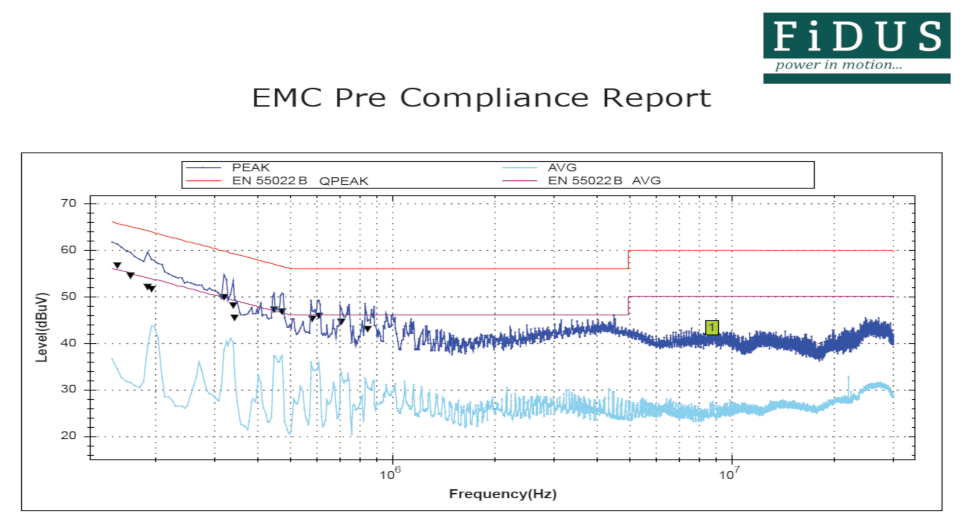Lessons learned of last minute EMC testing
The EMC directive dictates the necessary electromagnetic compatibility of a product to its intended EMC environment.That is that the product should not emit (either through the mains connection or waves of electromagnetic radiation) noise above certain limits in specific frequency bands and that the products performance should not be affected by other equipment in that environment – hence it is electrically and electromagnetically compatible to its environment. The requirements of the emitted frequencies and their limits, also the levels of severity of interference from neighbouring equipment that should be tolerated varies greatly depending on the application environment; military, automotive, industrial (control), IT and medical to name a few.
How to conform to the EMC directives?
To place a product on the European market and for it to carry the CE mark the EMC directive must be conformed to amongst other mandatory directives. It is therefore a goal that needs to be set and reviewed at every stage of a product development project, since without it the project would not be viable. All to often EMC is left to the last stage of the project and problems are fixed in situ to pass testing with costly or inconvenient re-work, or that it does not pass at all and the project must be delayed whilst it is redesigned with EMC in mind. To avoid untimely and costly re-designs or untidy and inconvenient in situ fixes, good EMC design practice should be in the forefront of the product designers mind.
Switch mode power supplies are inherently electrically noisy pieces of equipment and if poorly installed will not produce satisfactory results. The noise comes from the switching components on the PCB and their subsequent harmonics (multiples of that fundamental switching frequency). When power supplies are tested in the EMC test lab for their approval to a particular standard, they are installed on their own and with a purely resistive load. In real life the load is not purely resistive and the unit is installed often in close proximity with other equipment that can interfere or amplify noise generated by the power supply. When the product is installed in the final design it is wrong to assume that the final product will pass EMC if the power supply has been tested and showed to pass relevant EMC testing.

Points to consider when installing a power supply for a first-time pass?
When installing a power supply there are a few fundamental rules that can increase your chances of a first-time pass:
- Keep cable runs short – cabling acts as an aerial for electrical noise (also consider shielded cable).
- Avoid running cables together – this can cause mutual inductance, that is that the noise from one cable is transmitted to another just by their proximity. This can be avoided by screening and twisting or rerouting.
- Avoid running cables close to power supplies – noise can be parasitically absorbed to the cable from the power supply, which then acts as an aerial for that noise. If you have to do so, screening and twisting can reduce noise. Do not be tempted to zip tie cables to power supplies!
- Use an IEC inlet filter -these cost little but provide an extra layer of filtering. If you leave space for one at the start of the project then if it is not needed it can be omitted at a later date, however if you need one and there is no room for one you have a problem.
- Ensure that you speak to the power supply provider about best practice with your design. We have great experience with EMC testing and involving us as early as possible with your project can only help.
- Ensure that all necessary functional ground points are used correctly – read the suppliers datasheet carefully and study the engineering dimensional drawing carefully for marked FG points.
Keep in mind that class II (double insulated) products will be more challenging when it comes to EMC as an earth connection may not be available. A class I device has a PE (protective earth), however it is possible to have a class II product that uses a functional earth. This functional earth is not designed to be used as a safety feature if the insulation between the primary and chassis breaks down such as the case with the PE, but instead used for EMC purposes as such will not be carrying any “hazardous levels of energy” and may be an “accessible part”.
Pre-compliance EMC testing – Getting a time slot in an EMC test house can be tricky, certainly expensive. FiDUS Power offers complimentary, pre-compliance conducted EMC testing to give you confidence your design is on the right track for on time, in budget success!
Call us on 01183 420730.
